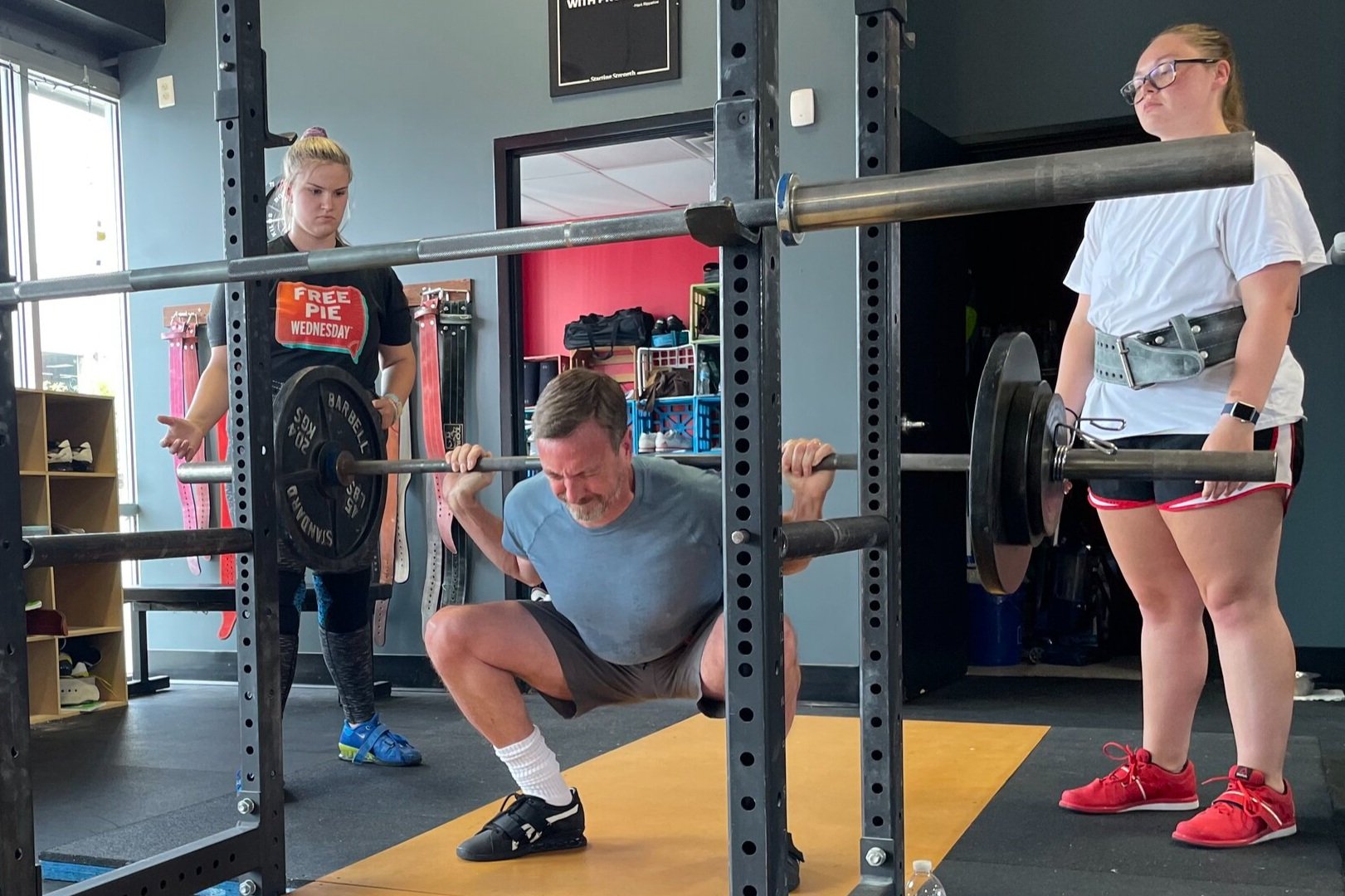Week 2021.10.25
/The 2021 Testify Fall Classic is in the books! Lots of PRs were set, and many congratulations go out to everyone who stepped onto the platform to compete this past Saturday. Thank you to those of you who helped out at the meet – setup, teardown, judging, spotting, loading, scoring, announcing – without you, this meet wouldn’t be possible. Also, thank you to those who came out to support and cheer on the lifters – you all made it a fun day for the lifters on the platform.
New on the Testify YouTube channel!
This Week’s Conditioning
Option 1
Sled Pyramid – 4, 5, or 6 tiers
Go up and down a 4, 5, or 6 tier “sled pyramid” – rest as needed. The distance for each round is 80 m indoors (a down-back on the 40m course) or 200 ft outdoors (2 down-backs on the 50 ft course). Rest as needed.
For example, Bob does the following (4 tiers):
Round 1: Empty sled
Round 2: 25#
Round 3: 50#
Round 4: 75#
Round 5: 50#
Round 6: 25#
Round 7: Empty sled
Compare to 2021.08.23.
Option 2
Bike/row:
4 x 3 minutes
Rest 3 minutes between each round. Score = lowest distance.
Compare to 2021.08.02.
Option 3
Outdoors:
5-10 rounds:
10 sledgehammer strikes (5R, 5L)
50 yd farmer carry (25 yd down-back)
Rest 1 minute
Indoors:
5-10 rounds:
10 sledgehammer strikes (5R, 5L)
100 ft farmer carry (50 ft down-back)
Rest 1 minute
Compare to 2021.07.05.
Option 4
10 x 50 ft yoke carry
Each carry is 25 feet down and 25 feet back and is for time. Rest 1 minute between carries.
Compare to 2021.07.05.





